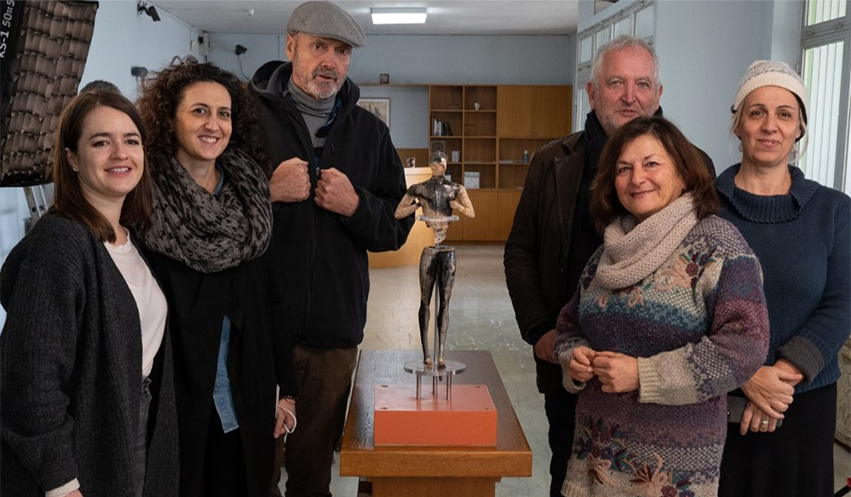CyI's STARC researchers are participating in the important project of 3D documentation and digital analysis of the Kouros of Palaikastro, (Late Bronze Age Crete), a unique gold-and-ivory statuette of extraordinary craftsmanship.
The research is conducted as part of the TALOS-project at the Université Catholique de Louvain, under the direction of Prof. Jan Driessen and in collaboration with Dr Alexander MacGillivray, of the British School in Athens, and The Cyprus Institute (Prof. Sorin Hermon and PhD students Martina Polig and Valentina Vassallo). The Greek Ministry of Culture/Archaeological Museum of Siteia, Crete (Dr Xrisa Sofianou) provided the logistics and local support. The research is part of the on-going activities within the EU funded project 4CH, aiming at establishing a European Competence Center for the Conservation of Cultural Heritage.
During the 1987 British School at Athens excavations of a small area in the Bronze Age or Minoan settlement of Palaikastro (Crete), fragments of a human statue in ivory, stone and gold were found, buried beneath the tumble of a fire destruction that dated around 1450 BC. During the following excavation campaigns, more fragments were retrieved. Initial restoration showed that the fragments belonged to a male torso of a chryselephantine composite statuette. Its pose – with the fists clenched in front of the torso – repeats a well-known posture already common for male votaries in Peak Sanctuary cults. Two years later, in the inner rooms of an adjacent building, the heavily burnt legs of the same statuette were discovered.
Eventually, most of the 54 cm high figure of a young man could be restored and is now exhibited at the Archaeological Museum of Siteia. Chryselephantine statues are extremely rare, and there is little doubt that all such gold-and-ivory statues of the Bronze and Iron Age were primarily intended to represent important divinities. An initial study suggested that the statue was taken out into the small square and violently destroyed: the shock shattered its upper body, after which the legs must have been thrown within the burning building (Sackett, MacGillivray & Driessen 2000).
The TALOS-Project, exploring the potential impacts of the Bronze Age Santorini eruption around 1540 BC, hypothesises that this caused a major and enduring societal upheaval. That also included a series of religious reactions that were triggered by the natural phenomena accompanying the eruption. Besides a change in artistic representation and the abandonment of traditional cult places such as Peak Sanctuaries, the period also witnesses the change from a female to a male-dominated pantheon.
The period before the eruption is indeed characterized by a preponderance of female representations of divinities whereas, by the time of the Linear B tablets of Knossos, male divinities and especially Diktaion Zeus become prominent. The Palaikastro male chryselephantine statue may be regarded as the first manifestation of this male-oriented religion. A reactionary faction of society may, however, have regarded it as an abomination, provoking its intentional destruction within an attempt of ritual deactivation.
The 3D digital documentation of the statue, carried out by the CyI's APAC Labs' researchers, aims at achieving a complete virtual reconstruction and original appearance of the statue through the analysis and re-composition of the small fragments, a better understanding of the details of the iconoclastic act and identity techniques and technologies applied in its manufacture.
Within the European project 4CH, the 3D documentation and consequent analysis contribute to the setting of requirements and protocols for a science and technology-based conservation and preservation of Cultural Heritage. Specifically, the actions are aimed at developing strategies for prioritising preservation and conservation activities of the museums as Cultural Heritage assets, implementing a map of risks (e.g., earthquakes, museum visitors, environmental conditions) that can damage the museum and its archaeological finds.
The research group's activities were filmed by the Aori Films team, who will feature them in a documentary on the famous statue.
